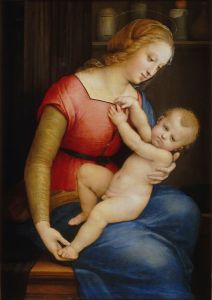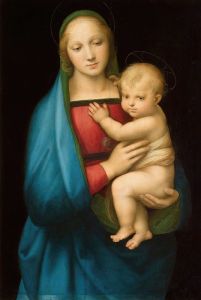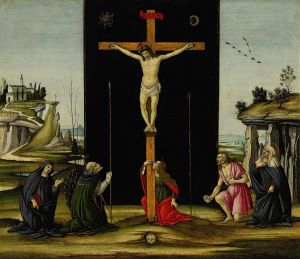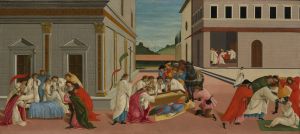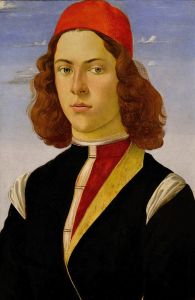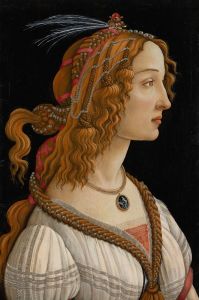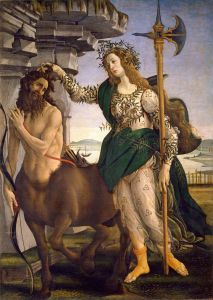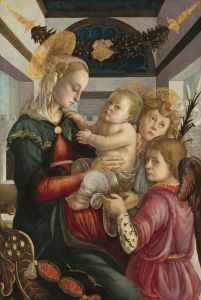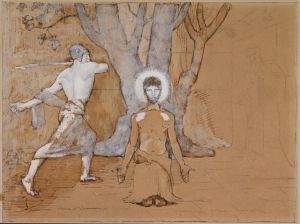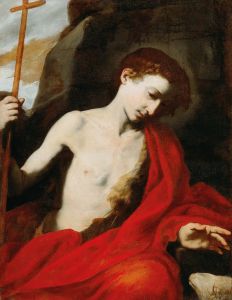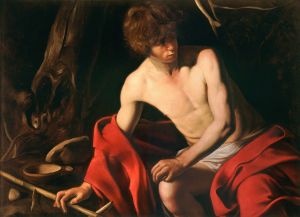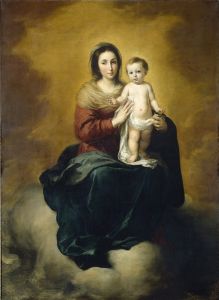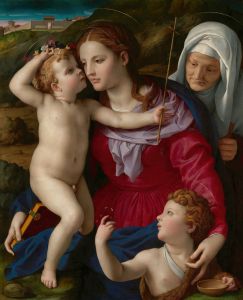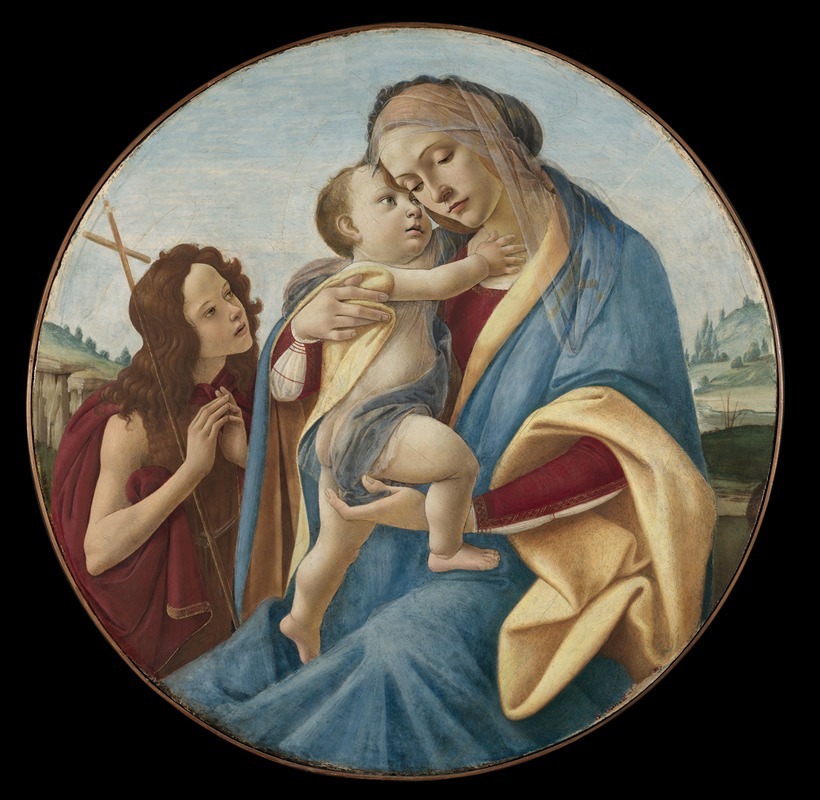
Virgin and Child with the Young Saint John the Baptist
A hand-painted replica of Sandro Botticelli’s masterpiece Virgin and Child with the Young Saint John the Baptist, meticulously crafted by professional artists to capture the true essence of the original. Each piece is created with museum-quality canvas and rare mineral pigments, carefully painted by experienced artists with delicate brushstrokes and rich, layered colors to perfectly recreate the texture of the original artwork. Unlike machine-printed reproductions, this hand-painted version brings the painting to life, infused with the artist’s emotions and skill in every stroke. Whether for personal collection or home decoration, it instantly elevates the artistic atmosphere of any space.
Virgin and Child with the Young Saint John the Baptist is a painting attributed to the Italian Renaissance artist Sandro Botticelli. Botticelli, whose full name was Alessandro di Mariano di Vanni Filipepi, was an influential painter of the Florentine school during the late 15th century. This artwork is an example of his religious compositions, which often depicted themes of the Virgin Mary and Christ Child, central figures in Christian iconography.
The painting portrays the Virgin Mary holding the Christ Child, with the young Saint John the Baptist standing nearby. Saint John the Baptist, the patron saint of Florence, is a common figure in Florentine art, symbolizing the city's religious devotion. In this work, the figures are arranged in a tender and intimate composition, emphasizing the maternal bond between Mary and Jesus, as well as the spiritual connection between the Christ Child and Saint John. The figures are depicted with Botticelli's characteristic grace and delicacy, showcasing his skill in rendering human emotion and interaction.
The painting is executed in tempera on panel, a medium frequently used during the Renaissance before the widespread adoption of oil painting. Botticelli's use of tempera allowed for fine detail and vibrant colors, which are evident in the intricate patterns and textures of the figures' garments and the soft modeling of their faces. The background of the painting is relatively simple, focusing attention on the central figures and their expressions.
While the exact date of the painting's creation is not definitively known, it is generally believed to have been produced during Botticelli's mature period, likely in the late 15th century. This was a time when Botticelli was deeply engaged in creating religious works, many of which were commissioned by wealthy patrons in Florence.
The painting is notable for its harmonious composition and the serene, contemplative mood it conveys. Botticelli's ability to combine religious symbolism with human emotion has made this work a significant example of Renaissance art. The inclusion of Saint John the Baptist, depicted as a child, reflects the artist's attention to theological themes and his connection to the cultural and spiritual life of Florence.
Today, the painting is housed in the Louvre Museum in Paris, where it is part of the museum's extensive collection of Renaissance art. It continues to be admired for its beauty and its representation of Botticelli's artistic achievements during the Italian Renaissance.





